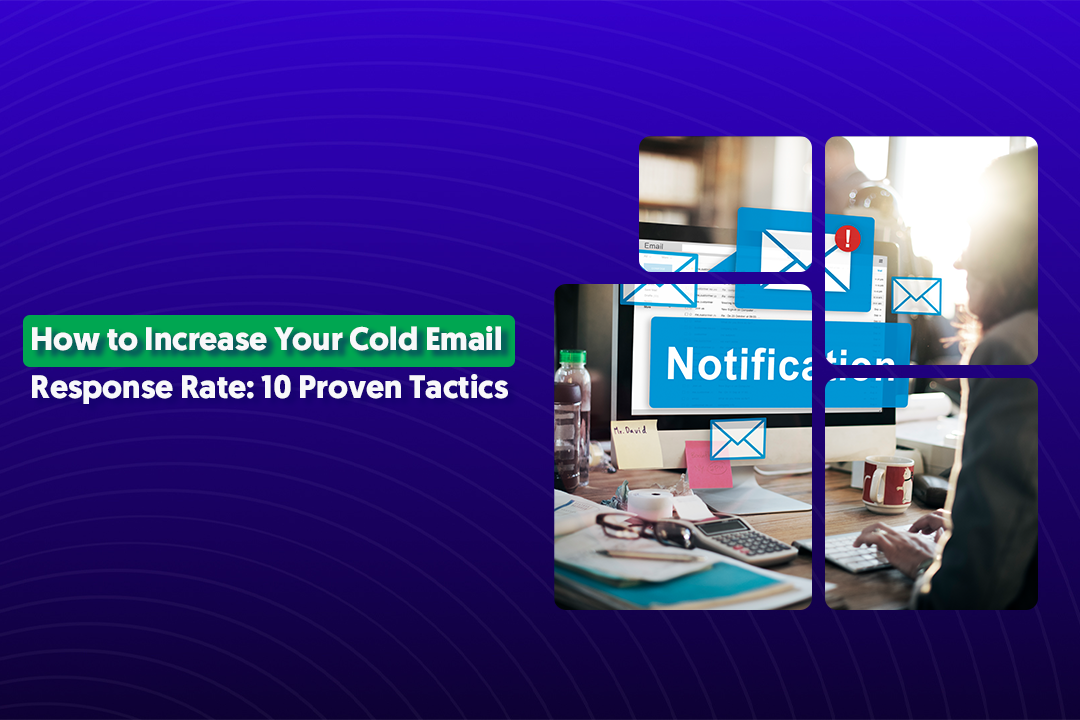Table of Content
Key Takeaways
- Sales development representatives are responsible for prospecting, qualifying leads, and booking meetings, freeing your account executives to focus solely on closing deals.
- SDRs bridge the gap between marketing-generated interest and sales-ready opportunities through cold calling, email outreach, and LinkedIn prospecting.
- Core SDR duties include prospect research, lead qualification calls, CRM management, and collaborating with AEs to ensure smooth handoffs.
- Building an in-house SDR team costs $80K-$100K+ per rep annually and takes 2-3 months to ramp up, while outsourced teams deliver results in days with predictable costs.
- The best SDRs combine strong communication skills, resilience to handle rejection, disciplined follow-up habits, and proficiency with sales tools.
If you've been building out your sales team, you've probably heard the term sales development representative thrown around more times than you can count.
But what exactly does an SDR do, and why does every B2B company seem desperate to hire one (or ten)?
Here's the thing: sales development representatives are the engine that keeps your sales pipeline running.
While your account executives are busy closing deals, SDRs are out there doing the heavy lifting, finding prospects, starting conversations, and qualifying leads so your closers can focus on what they do best.
At Cleverly, we've helped over 10,000 B2B companies generate millions in pipeline revenue, and we've seen firsthand how the right lead generation approach can make or break your sales numbers.
This guide breaks down everything you need to know about the sales development representative role, and how to decide if building an in-house team or outsourcing makes more sense for your business.
Let's dive in.

What Is a Sales Development Representative (SDR)?
In simple terms, an SDR is the person responsible for the front end of your sales process.
They're the ones reaching out to potential customers, sparking initial conversations, and figuring out who's actually worth your sales team's time.
Think of SDRs as the bridge between your marketing efforts and your closed deals. They take leads—whether from inbound sources like your website or cold email prospecting—and qualify them before passing them along to your closers.
How SDRs differ from Account Executives
While both roles live in the sales organization, they handle completely different parts of the process. Sales development representatives focus on the top of the funnel.
They're prospecting, cold outreach, booking meetings, and qualifying leads. Account Executives, on the other hand, take those qualified leads and guide them through demos, negotiations, and actually closing the deal.
SDRs do the hunting. AEs do the closing.
Why SDRs matter for your pipeline
Without SDRs, your account executives would spend half their day chasing down leads that aren't ready to buy or don't fit your ideal customer profile. That's a massive waste of time and talent.
Sales development representatives filter out the noise so your AEs can focus exclusively on prospects who are qualified, interested, and ready to have a real conversation about buying.
SDR's Role in the Sales Process
SDR in sales is all about owning the messy middle, that gap between someone showing interest and actually being ready to talk to a closer.
Without this role, leads either fall through the cracks or waste your AE's time with unqualified conversations.
Bridging Marketing-Generated Leads to Sales-Ready Opportunities
Your marketing team works hard to generate leads through content, ads, and your website.
But here's the reality: not every lead that downloads your whitepaper or fills out a form is ready to buy. That's where SDR in sales becomes critical.
SDRs take those marketing-generated leads and do the detective work. They reach out, ask the right questions, and figure out if this person has budget, authority, need, and timing.
If they do, the lead gets passed to an AE. If not, they go into a nurture sequence or get disqualified entirely. This filtering process protects your sales team's time and keeps your pipeline healthy.
Handling Top-of-Funnel Outreach
SDRs don't just wait for inbound leads to come to them. They're also responsible for proactive outreach to fill the pipeline. This includes:
- Cold calling prospects who fit your ideal customer profile.
- Cold emailing decision-makers with personalized messages that actually get responses.
- LinkedIn outreach to connect with prospects where they're already active
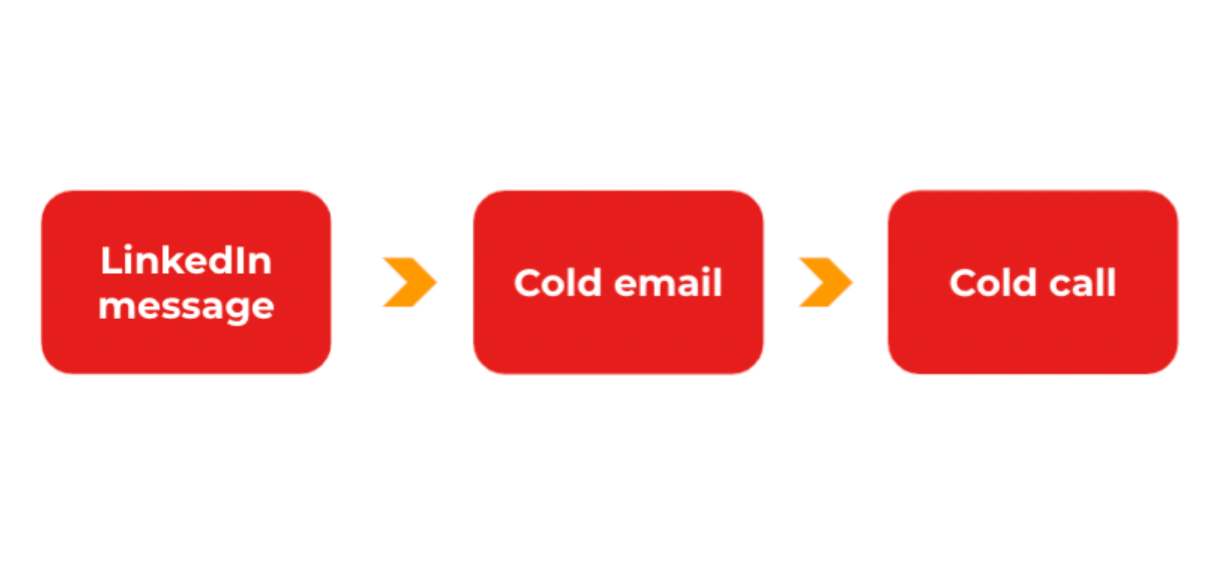
Qualifying Leads Before Hand-Off to Closers
This is where SDRs earn their keep. Before any lead gets to an account executive, the SDR needs to verify a few things:
- Does this company actually need what we're selling?
- Is this person the decision-maker, or at least connected to one?
- Do they have a budget allocated for this type of solution?
- What's their timeline for making a decision?
By answering these questions upfront, sales development representatives ensure that AEs only spend time on opportunities that have real potential to close. No more wasted demos or ghost calls.
Key Metrics SDRs Influence
If you want to know whether your SDR in sales strategy is working, watch these numbers:
- Meetings booked: How many qualified conversations are SDRs setting up for your AEs?
- SQLs (Sales Qualified Leads): How many leads pass the qualification bar and enter your active pipeline?
- Pipeline value: What's the total dollar amount of opportunities SDRs are creating?
When these metrics trend upward, you know your lead generation engine is running the way it should.

Sales Development Representative Job Description
When most B2B companies write a sales development representative job description, they're looking for someone who can handle rejection, stay organized, and consistently fill the sales pipeline with qualified opportunities.
But let's get more specific about what this role actually looks like day-to-day.
Sales development representative job description
At its core, the sales development representative position is about proactive outreach and lead qualification. You're not waiting for the phone to ring—you're making it happen.
SDRs spend their days researching target accounts, crafting personalized messages, reaching out to prospects across multiple channels, and having discovery conversations to determine fit.
This isn't a passive role. You're on the front lines of your company's growth, directly responsible for keeping your sales team's calendars full of qualified meetings.

What makes a strong SDR candidate
The best sales development representatives share a few key traits. They're persistent without being pushy. They can handle hearing "no" dozens of times a day without losing momentum.
They're organized enough to manage hundreds of prospects in various stages of outreach. And they're curious—always asking questions to understand whether a prospect is truly a good fit.
Most sales development representative job descriptions also emphasize skills like:
- Strong written and verbal communication
- Comfort with CRM systems and sales tools
- Ability to quickly learn your product and industry
- Self-motivation and accountability for hitting activity metrics
- Resilience and a positive attitude even when leads go cold
The reality of the SDR role
Here's what we tell companies at Cleverly: hiring a great SDR is hard. You need someone who can execute consistently, learn your ideal customer profile inside and out, and adapt their messaging based on what's working.
The sales development representative job description might look straightforward on paper, but finding someone who can actually deliver results takes time—and often multiple hiring cycles.
That's why many B2B companies are rethinking whether building an in-house SDR team is the best path forward, or if outsourcing to a specialized lead generation agency makes more sense. We'll dig into that decision later in this post.
Core Job Duties of a Sales Development Representative
Understanding the sales development representative job duties helps you set clear expectations—whether you're hiring an SDR or evaluating if outsourcing makes more sense.
Let's break down what SDRs actually do every day.
Prospect Research & ICP Targeting
Before an SDR sends a single message, they need to know who they're targeting. This means spending time researching companies that fit your ideal customer profile (ICP) and identifying the right decision-makers within those organizations.
Sales development representative job duties in this area include:
- Building lists of target accounts based on industry, company size, tech stack, or other qualifying criteria.
- Using tools like LinkedIn Sales Navigator to find the right contacts.
- Researching prospects to understand their pain points and business challenges.
- Prioritizing outreach based on account fit and likelihood to convert
The better the research, the more personalized and effective the outreach becomes. At Cleverly, we've seen response rates jump significantly when SDRs take the time to understand a prospect's specific situation before reaching out.
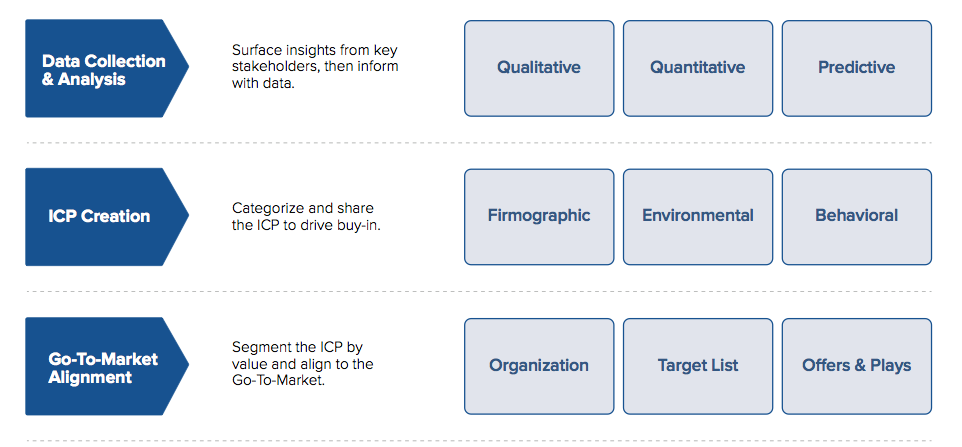
Cold Calling & Cold Email Outreach
This is where most SDRs spend the bulk of their time. Sales development representative job duties heavily revolve around proactive outreach to start conversations with people who've never heard of your company.
Cold calling means picking up the phone and having conversations with prospects—handling objections, asking qualifying questions, and trying to book a meeting.
Learn More: Cold Calling Scripts That Actually Work (With Examples)
Cold emailing means crafting personalized messages that cut through inbox noise and actually get responses.
Both require persistence. You're not going to get a "yes" on the first try most of the time. SDRs need to follow up consistently across multiple touchpoints without being annoying.
Related: How to Increase Your Cold Email Response Rate (10 Proven Tactics)
Lead Nurturing and Qualification Calls
Not every prospect is ready to buy right now, and that's okay. Part of the sales development representative job duties involves staying in touch with leads who aren't ready yet—sending helpful content, checking in periodically, and keeping your company top of mind.
When a lead does show interest, SDRs jump on qualification calls to ask the important questions:
- What problem are you trying to solve?
- Have you looked at other solutions?
- Who else needs to be involved in this decision?
- What does your buying timeline look like?
These conversations determine whether the lead gets passed to an AE or needs more time in the nurture cycle.
Using CRM & Sales Engagement Tools
SDRs live in their tech stack. Managing hundreds of prospects without a system is impossible, so sales development representative job duties include staying organized with tools like:
- CRM platforms (Salesforce, HubSpot) to track every interaction and pipeline stage.
- Sales engagement tools (Outreach, SalesLoft) to automate follow-up sequences.
- Lead intelligence tools to gather prospect data and insights
Keeping your CRM updated isn't just busy work—it ensures nothing falls through the cracks and gives your sales team visibility into what's happening at the top of the funnel.
More on tools:
- Top 9 Data Enrichment Tools to Boost Lead Generation in 2025
- 8 Best GTM Tools to Accelerate Your Growth in 2025 (Expert-Curated)
- 8 BEST Marketing Attribution Software in 2025 (We Use #1 Personally)
Collaborating with AEs to Improve Lead Handoffs
The best SDR-to-AE relationships are built on communication. Sales development representatives don't just toss leads over the fence and hope for the best.
They provide context about the conversation, share what the prospect cares about, and give AEs everything they need to have a productive first call.
This collaboration also works in reverse. When AEs provide feedback about lead quality, what's working and what's not, SDRs can adjust their qualification criteria and improve future handoffs.
Essential Skills Every SDR Should Have
Hiring a sales development representative isn't just about filling a seat, it's about finding someone with the right mix of skills to consistently generate pipeline.
Here's what separates average SDRs from the ones who actually move the needle.
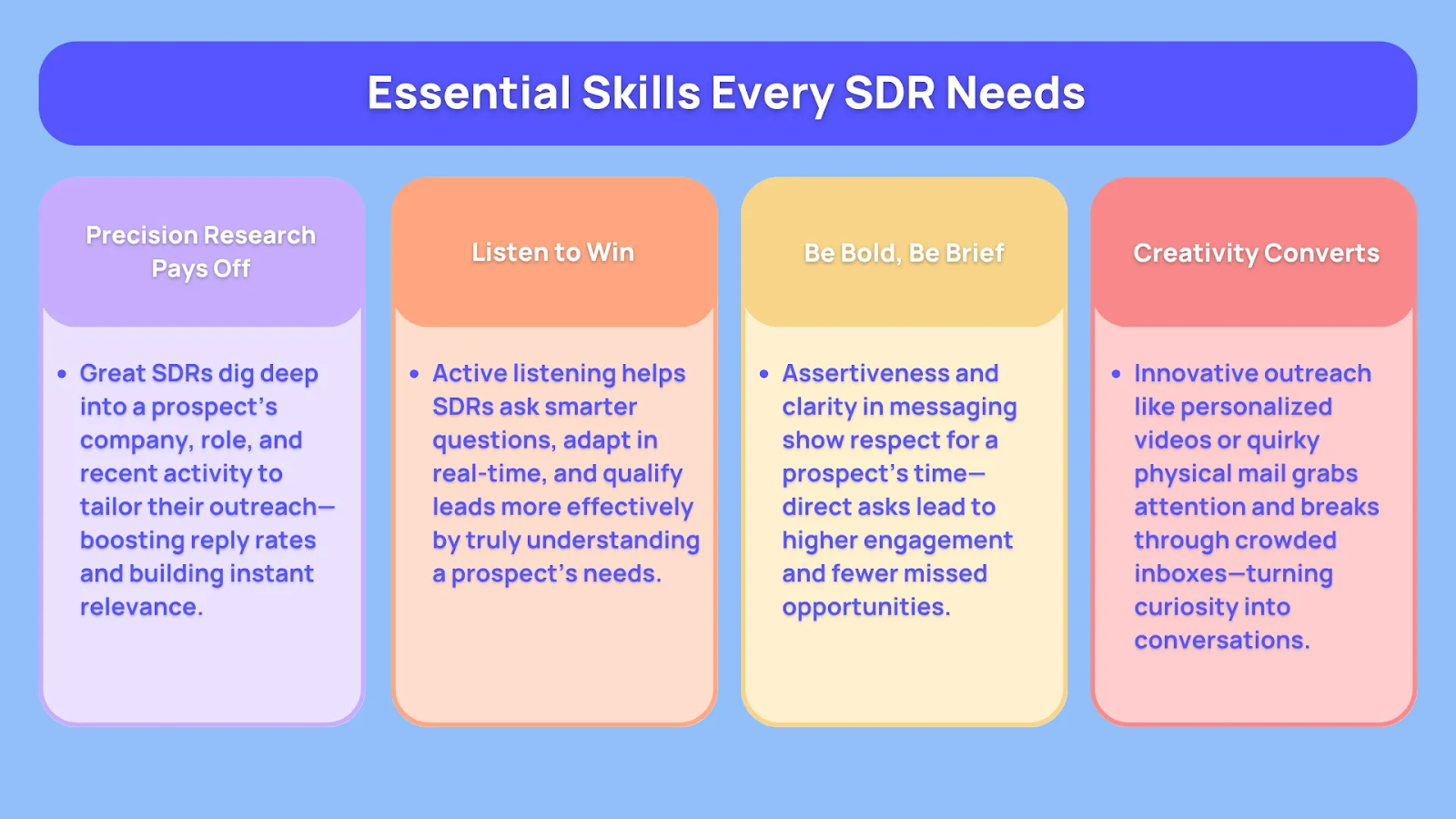
Strong Communication and Listening Skills
This one sounds obvious, but it's where most SDRs fall short. It's not just about talking, it's about asking the right questions and actually listening to what prospects tell you.
The best SDR skills for sales include being able to:
- Write clear, personalized emails that don't sound like templates.
- Have natural phone conversations without reading from a script.
- Ask open-ended questions that uncover real pain points.
- Adapt your messaging based on how the prospect responds.
At Cleverly, we've tested thousands of cold email and LinkedIn messages. The ones that perform best feel like one human talking to another, not a sales robot trying to hit quota.
Resilience to Handle Rejection
Let's be honest: most of your outreach will get ignored. Prospects will say no. People will tell you they're not interested. Some will be outright rude about it.
SDR skills for sales require thick skin. You need to hear "no" 50 times and still pick up the phone for call number 51 with the same energy.
The SDRs who burn out fast are the ones who take rejection personally instead of seeing it as part of the process.
Resilience isn't just about toughness, it's about maintaining a positive attitude and learning from what doesn't work so you can improve your approach.
Time Management and Follow-Up Discipline
Here's where good SDRs become great ones. Managing your day efficiently and following up consistently are critical SDR skills for sales that directly impact your numbers.
Time management means
- Blocking time for different activities (research, outreach, calls, admin work).
- Prioritizing high-value accounts over low-probability prospects.
- Staying focused instead of getting distracted by busywork
Follow-up discipline means
- Actually following through on your sequences instead of giving up after one attempt.
- Setting reminders and using your CRM to track next steps.
- Understanding that most deals happen after multiple touchpoints, not on the first email
The companies that generate the most pipeline aren't necessarily the ones doing the most outreach, they're the ones doing consistent, disciplined follow-up.
Knowledge of Sales Tools
Modern SDRs need to be comfortable with technology. You can't manage a high-volume outreach operation using spreadsheets and sticky notes.
Essential SDR skills for sales include knowing how to use:
- CRM platforms like Salesforce or HubSpot to track prospects and pipeline.
- Dialers to make calls efficiently without manually dialing numbers.
- Sequencing software like Outreach or SalesLoft to automate follow-ups.
- LinkedIn Sales Navigator for prospecting and social selling.
- Email tracking tools to see who's opening and clicking your messages
You don't need to be a tech expert, but you should be able to learn new tools quickly and use them to make your outreach more efficient. The right tools don't replace good selling—they just let you do more of it without burning out.
In-House SDRs vs. Outsourced SDR Teams

Deciding between in-house SDRs vs. outsourced SDR teams is one of the biggest strategic choices you'll make for your lead generation.
Both approaches work, but they come with very different trade-offs. Let's break down what each option actually looks like in practice.
Cost and Scalability
📌 In-house SDRs come with significant overhead. You're paying base salary plus commission, benefits, office space, technology subscriptions, and management time. For a single SDR, you're easily looking at $80K-$100K+ annually when you factor in everything.
Scaling gets expensive fast. Want to go from 2 SDRs to 5? That's three more full hiring cycles, three more seats, three more software licenses, and a lot more management bandwidth.
📌 Outsourced SDR teams typically work on a flat monthly fee. You get predictable costs without the burden of employment overhead.
Ramp-Up Time and Training Needs
📌 Hiring an in-house SDR means you're starting from scratch. You need to recruit, interview, hire, onboard, and train, and that's before they make their first call. Most SDRs take 2-3 months to ramp up and start producing consistent results.
📌 Outsourced SDR teams hit the ground running. At Cleverly, we've already built the systems, trained the team, and refined the processes. You brief us on your ICP and value proposition, and we're running campaigns within days, not months.
Access to Expertise & Resources
📌 When you hire in-house SDRs, you're betting on finding someone who knows how to prospect effectively. But most SDRs are early in their careers and learning on the job, using your pipeline as their training ground.
📌 Outsourced SDR teams bring specialized expertise. We've run campaigns for thousands of B2B companies across every industry. We know what messaging works, which channels convert best, and how to optimize based on real data.
Quality and Consistency of Outreach
📌 In-house SDRs can deliver great results—if you hire the right person, train them well, and manage them closely. But quality varies wildly depending on who you hire. One great SDR can crush it while another struggles to book a single meeting.
📌 Outsourced SDR teams offer consistency because quality control is baked into the service. At Cleverly, we've generated over $312 million in pipeline revenue by systematizing what works. Our messaging is tested, our follow-up is disciplined, and our results are measurable.
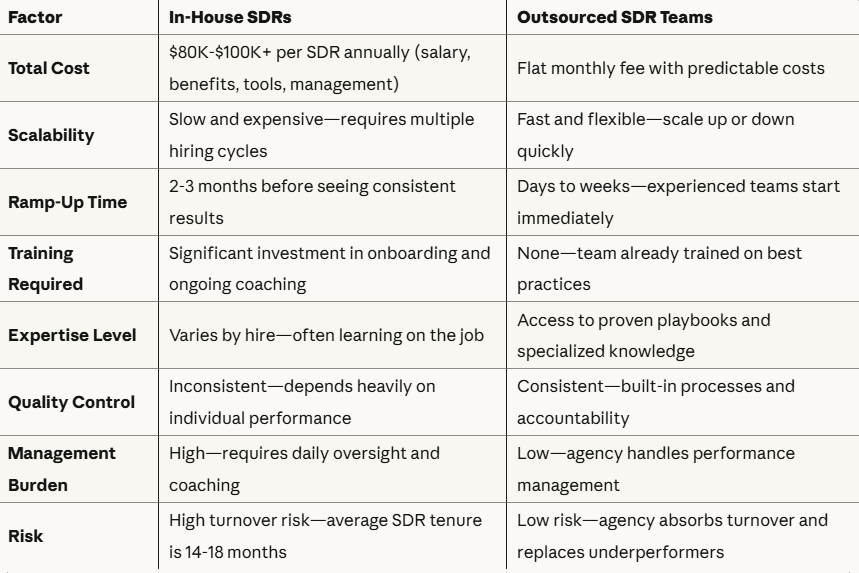
When Companies Should Consider Outsourcing
Here's the reality: in-house SDRs vs. outsourced SDR isn't always an either-or decision, but outsourcing makes the most sense when:
- You need pipeline yesterday, not in three months after hiring and training.
- You don't have the bandwidth to manage and coach SDRs daily.
- You've tried hiring in-house and struggled with turnover or inconsistent results.
- You want to test lead generation without committing to full-time headcount.
- You need specialized expertise in channels like LinkedIn or cold email
How Cleverly's Cold Calling SDRs Can Power Your Pipeline
Building an in-house SDR team takes months. Getting results with Cleverly takes days.
Our cold calling SDR team acts as a seamless extension of your sales organization—no hiring, no training, no management headaches. We handle the entire top-of-funnel process so your account executives can focus on what they do best: closing deals.
What Our Outsourced SDR Services Include
When you work with Cleverly, you're not just getting warm bodies making calls. You're getting a full-stack outsourced SDR services solution:
- Prospect research & ICP-based list building – We identify and target the exact companies and decision-makers who match your ideal customer profile.
- Outreach strategy + proven scripts – Our team uses battle-tested messaging frameworks that actually get conversations started, not generic scripts that get hung up on.
- Professional SDRs making calls & booking meetings – Experienced cold calling SDRs who know how to handle objections, qualify leads, and set up qualified meetings for your closers.
Why Companies Choose Cleverly's Outsourced SDR Services
Skip the hiring circus – No more posting job ads, sifting through resumes, or gambling on unproven reps. Our team is already trained and ready to go.
Get meetings faster – While competitors are still onboarding their first SDR, you're already filling your pipeline with qualified opportunities.
Scale outbound efficiently – Need more volume? We scale with you. Want to test a new market? We adjust targeting overnight.
The Results Speak for Themselves
- 1M+ cold calls made across thousands of B2B campaigns
- 53K appointments set with qualified decision-makers
- $312M pipeline generated for companies just like yours
Our cold calling SDR team has spent years refining what works in outbound lead generation. We've made the mistakes, tested the messaging, and built the systems so you don't have to.
If you're tired of empty pipelines and long hiring cycles, it's time to let Cleverly's cold calling services do the heavy lifting. We'll book the meetings. You close the deals.
Conclusion
Sales development representatives are the backbone of any high-performing B2B sales organization. They're the ones doing the hard work of prospecting, qualifying, and filling your pipeline so your closers can focus on what matters, bringing in revenue.
But here's what we've learned after working with over 10,000 B2B companies: building an effective in-house SDR team is harder than it looks. The hiring takes forever. The training is expensive. The turnover is brutal. And while you're figuring it all out, your pipeline sits empty and your competitors are booking meetings.
That's why more companies are choosing to outsource their sales development representative function to specialists who've already cracked the code.
At Cleverly, we've made over 1 million cold calls, set 53,000+ appointments, and generated $312 million in pipeline revenue because this is all we do—and we do it exceptionally well.
Whether you decide to build in-house or partner with an agency like us, the important thing is having a dedicated engine for lead generation. Your account executives shouldn't be cold calling. They should be closing deals that qualified SDRs put in front of them.
Ready to fill your pipeline without the hiring headaches? Let's talk!
Frequently Asked Questions
1. What does a Sales Development Representative do day-to-day?
A sales development representative spends their day researching prospects, making cold calls, sending personalized emails, qualifying leads through discovery conversations, and booking meetings for account executives. They also manage their CRM, follow up on previous outreach, and collaborate with AEs to ensure smooth lead handoffs.
2. How is an SDR different from an Account Executive?
SDRs focus on the top of the sales funnel—prospecting, cold outreach, and qualifying leads to determine if they're worth pursuing. Account Executives take those qualified leads and handle everything from demos to negotiations to closing the deal.
3. Should a startup hire in-house SDRs or outsource to an agency?
Startups should consider outsourcing if they need pipeline fast, lack the bandwidth to manage and train SDRs, or want to avoid the $80K-$100K+ annual cost per rep with 2-3 month ramp times. In-house SDRs make sense when you have established processes, dedicated sales leadership, and can afford the time investment to build a team from scratch.
4. What skills make a successful SDR?
Successful SDRs combine strong communication and active listening, resilience to handle constant rejection, disciplined time management and follow-up habits, and proficiency with sales tools like CRMs and sequencing software. They're also naturally curious, persistent without being pushy, and quick learners who adapt their approach based on what works.
5. How can outsourced SDR teams improve cold calling results?
Outsourced SDR teams like Cleverly bring proven scripts, specialized expertise from running thousands of campaigns, and experienced callers who know how to handle objections and qualify leads effectively. You get immediate access to best practices and consistent quality control without spending months training reps or dealing with the trial-and-error phase that comes with building an in-house team.



